Re: Along The Gilpin Tramway - A Closer Look
Posted by Keith Pashina on Jan 20, 2025; 5:44pm
URL: http://c-sng-discussion-forum.254.s1.nabble.com/Along-The-Gilpin-Tramway-A-Closer-Look-tp20380p20445.html
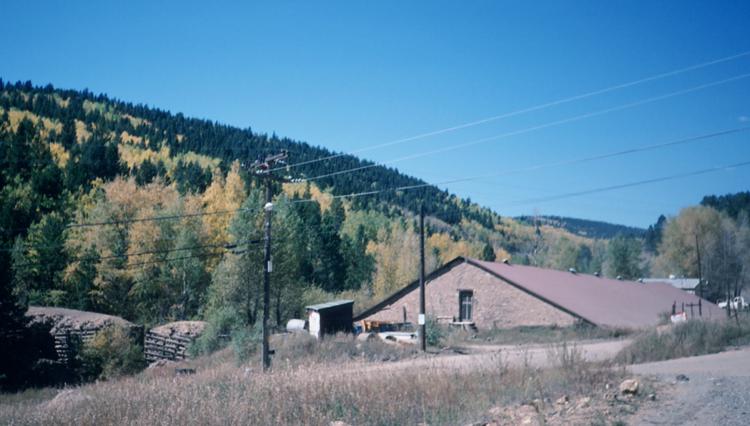
Central City had 3 water reservoirs at one time, and this reservoir was located adjacent to the tram grade (the reservoir was constructed first).
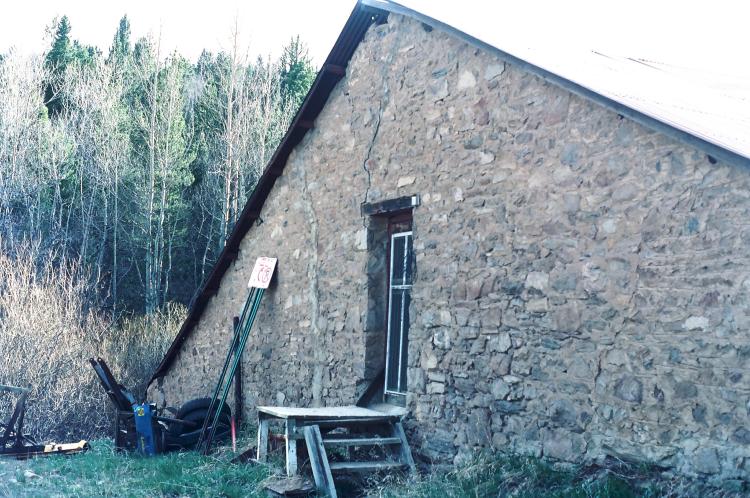
As with so many structures in Central City, the end walls of the reservoir were constructed of mortared stone masonry.
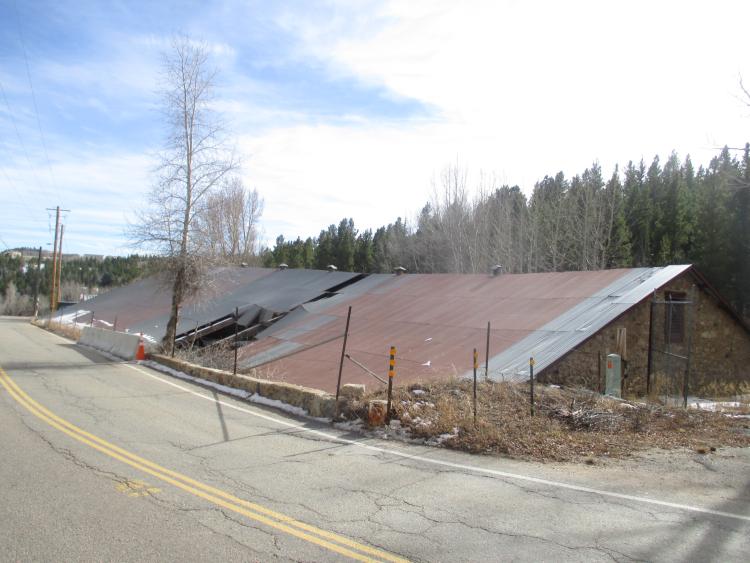
This view shows the west end of the city reservoir, and gives you an idea about how large these structures were. These structures are no longer in service.
The second water tank was built around 1900, and was relocated on the north side of the tracks. At about the same time, the Gilpin Tram did some minor track work to realign the sharp curve it made as it wrapped around Eureka Gulch. The second water tank was of a more conventional style, and served the Tram until it was abandoned. For many years, a section of 4” diameter iron standpipe sat next to the road going up Winnebago Hill, marking the site of the second water tank. This pipe was removed in the last 10 years or so, and nothing else remains today.
The Central City water reservoir was about 50’ wide and 125’ long, and mostly constructed into the ground, so only the only exposed portion was the large, peaked corrugated iron roof, and the triangular-shaped stone masonry ends. There was a small lineside shed between the reservoir and Gilpin Tram track, and I wonder if this may have housed a valve or pump.
Eureka Gulch has a small, intermittently flowing stream running through it, and this required the tram to construct one of their characteristic simple bridges. The abutments were log cribbing filled with stone, and a simple wood beam span across the streambed. The period photographs show the grade was several feet above the stream bed, and it apparently silted in over the years to the shallow crossing remaining today.
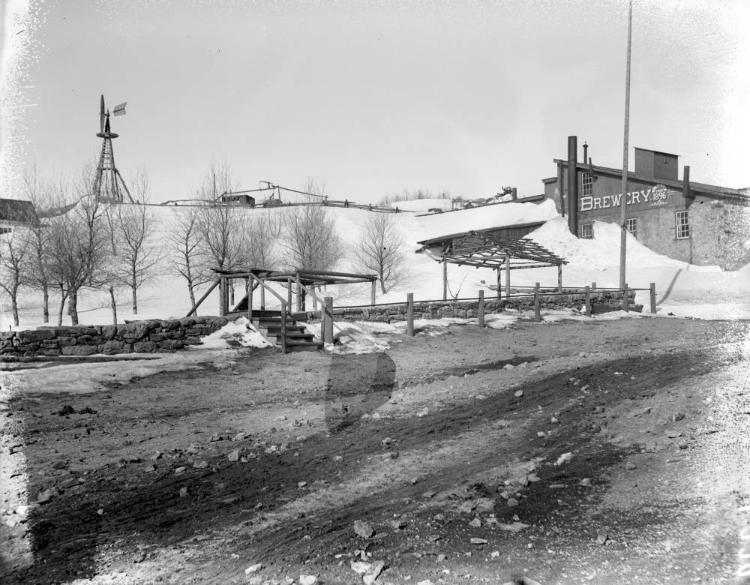
The Mack Brewery, located on Eureka Street, about ¼ mile above the tram grade. It was a very popular spot in its day. This brewery shut down around 1899, due to outside competition. This image is from the Denver Public Library, Western History Collection, call number L-229.
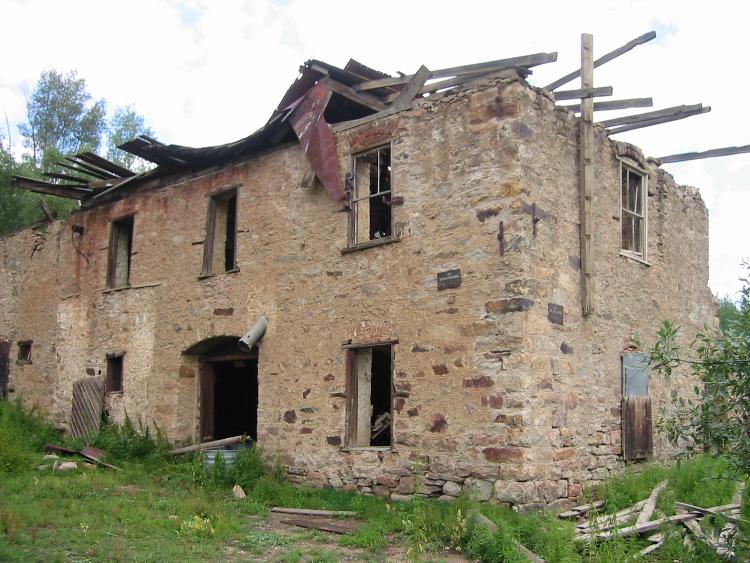
Stone walls of the brewery ruins remain today. The ruins were recently stabilized by the developer of an adjacent townhome development.
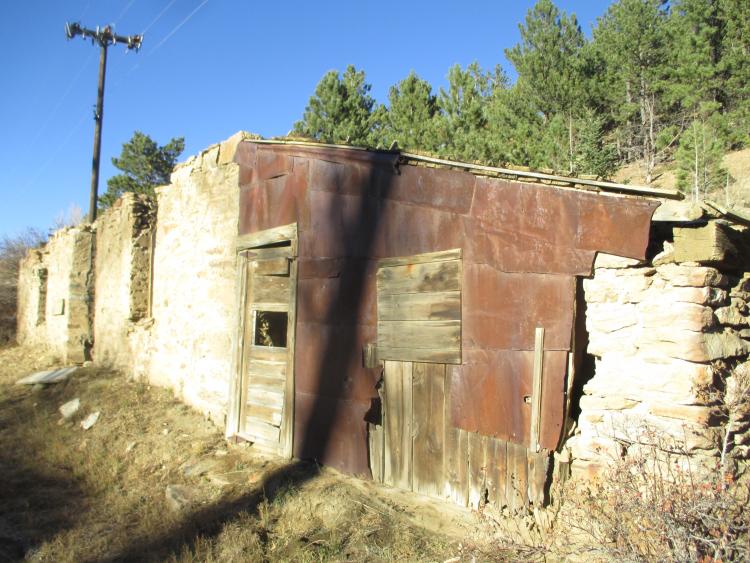
Across the street from the Mack Brewery are these ruins. Part of this structure formerly was a saloon, associated with the brewery, and another part appeared to be used for stables. This is a very interesting building – be sure to take a closer look next time you pass by!
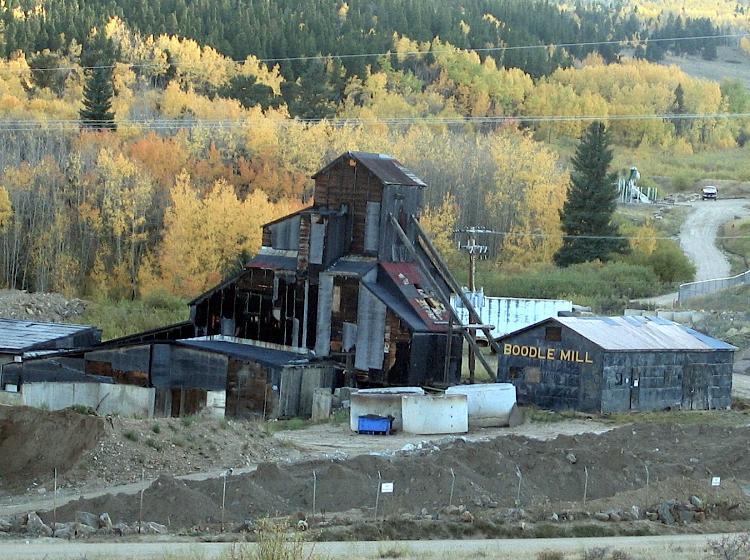
At the top of the hill, and next to Eureka Street, is the Boodle Mill. This photo was taken several years ago, before it was renovated with new exterior cladding.
Although located some distance from the tram grade, Eureka Gulch also was home to a brewery, located perhaps ¼ mile further up the gulch. At the top of the hill, there were at least three different Central City cemeteries, as well as the Boodle Mine. Ruins of the brewery remain, as does the recently re-clad Boodle Mine.
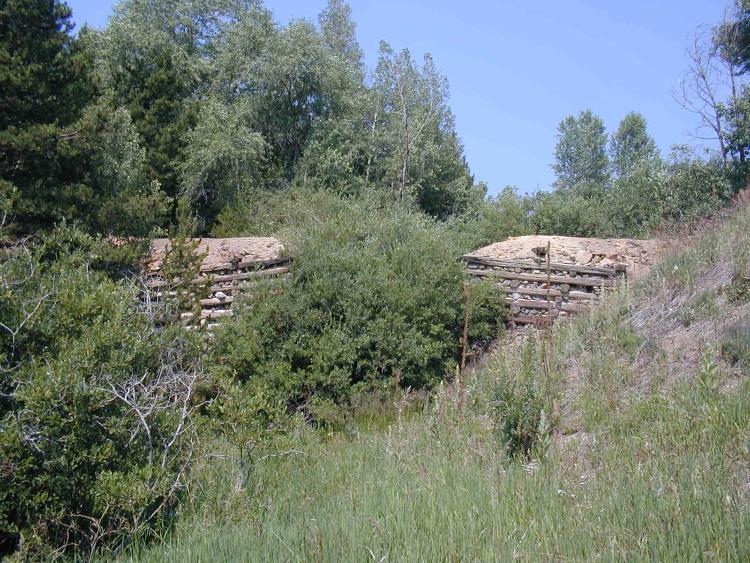
At the Gilpin Tram bridge crossing over the gulch, the two log cribbing abutments still remain.
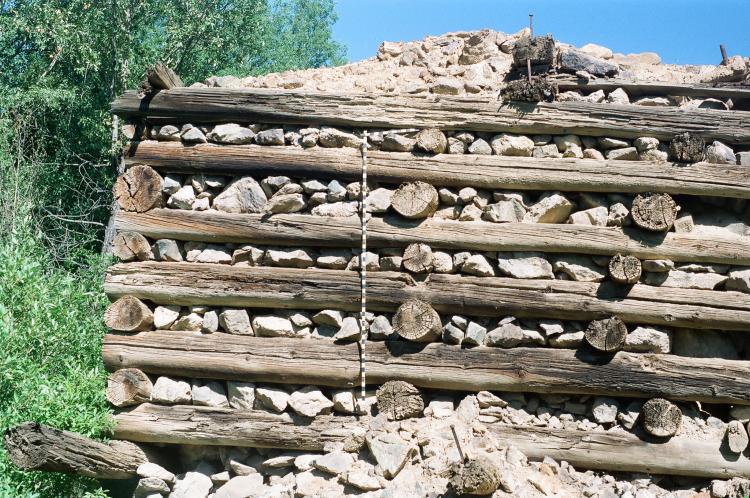
A closer view of the north abutment shows details of how the abutment was constructed. The tilt of the abutment towards the left is actually there, not just the camera angle. The abutments tilt back from the bridge span over the gulch.
URL: http://c-sng-discussion-forum.254.s1.nabble.com/Along-The-Gilpin-Tramway-A-Closer-Look-tp20380p20445.html

Central City had 3 water reservoirs at one time, and this reservoir was located adjacent to the tram grade (the reservoir was constructed first).

As with so many structures in Central City, the end walls of the reservoir were constructed of mortared stone masonry.

This view shows the west end of the city reservoir, and gives you an idea about how large these structures were. These structures are no longer in service.
The second water tank was built around 1900, and was relocated on the north side of the tracks. At about the same time, the Gilpin Tram did some minor track work to realign the sharp curve it made as it wrapped around Eureka Gulch. The second water tank was of a more conventional style, and served the Tram until it was abandoned. For many years, a section of 4” diameter iron standpipe sat next to the road going up Winnebago Hill, marking the site of the second water tank. This pipe was removed in the last 10 years or so, and nothing else remains today.
The Central City water reservoir was about 50’ wide and 125’ long, and mostly constructed into the ground, so only the only exposed portion was the large, peaked corrugated iron roof, and the triangular-shaped stone masonry ends. There was a small lineside shed between the reservoir and Gilpin Tram track, and I wonder if this may have housed a valve or pump.
Eureka Gulch has a small, intermittently flowing stream running through it, and this required the tram to construct one of their characteristic simple bridges. The abutments were log cribbing filled with stone, and a simple wood beam span across the streambed. The period photographs show the grade was several feet above the stream bed, and it apparently silted in over the years to the shallow crossing remaining today.

The Mack Brewery, located on Eureka Street, about ¼ mile above the tram grade. It was a very popular spot in its day. This brewery shut down around 1899, due to outside competition. This image is from the Denver Public Library, Western History Collection, call number L-229.

Stone walls of the brewery ruins remain today. The ruins were recently stabilized by the developer of an adjacent townhome development.

Across the street from the Mack Brewery are these ruins. Part of this structure formerly was a saloon, associated with the brewery, and another part appeared to be used for stables. This is a very interesting building – be sure to take a closer look next time you pass by!

At the top of the hill, and next to Eureka Street, is the Boodle Mill. This photo was taken several years ago, before it was renovated with new exterior cladding.
Although located some distance from the tram grade, Eureka Gulch also was home to a brewery, located perhaps ¼ mile further up the gulch. At the top of the hill, there were at least three different Central City cemeteries, as well as the Boodle Mine. Ruins of the brewery remain, as does the recently re-clad Boodle Mine.

At the Gilpin Tram bridge crossing over the gulch, the two log cribbing abutments still remain.

A closer view of the north abutment shows details of how the abutment was constructed. The tilt of the abutment towards the left is actually there, not just the camera angle. The abutments tilt back from the bridge span over the gulch.
Keith Pashina
Narrow-minded in Arizona
Narrow-minded in Arizona
| Free forum by Nabble | Edit this page |